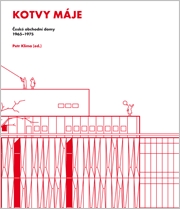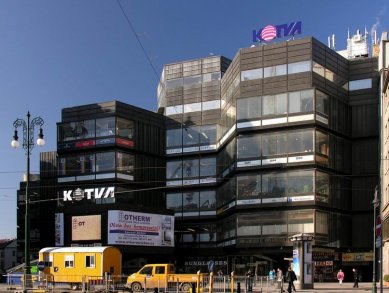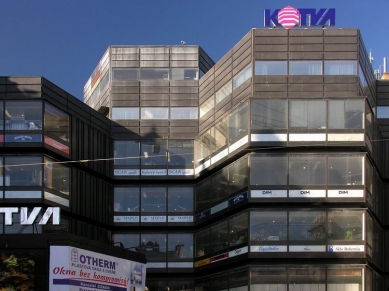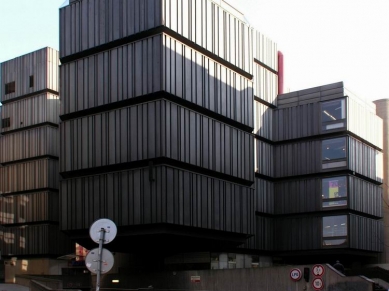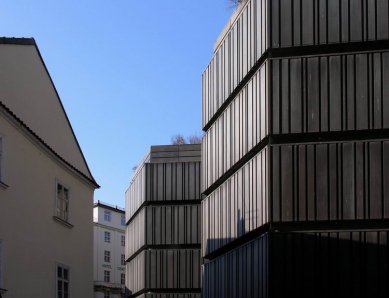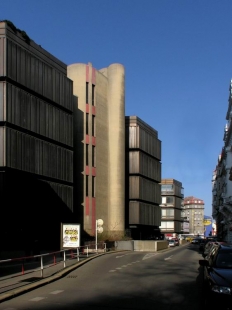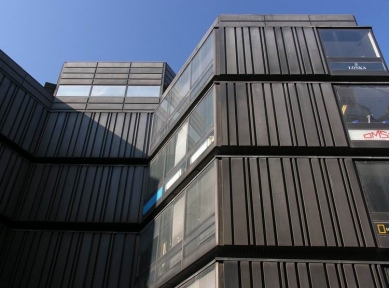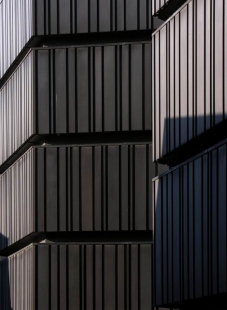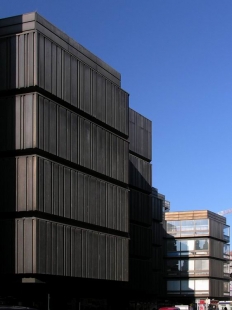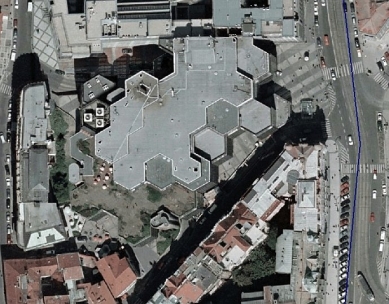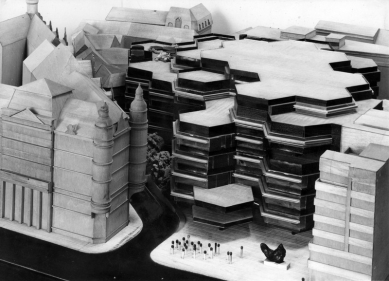 |
From the competition announced by the management of the Prior department stores, which closed on December 1, 1969, the winning proposal emerged from twenty-one entries, created by the Machonin couple and their Atelier Alfa Association of Project Studios. It was likely the efficiency of their solution that prevailed, allowing the project to meet maximalist requirements for retail space on a small, cramped plot without standing out above the level of the historical development. The concept – and ultimately the building – is based on columns with angled braces, essentially a version of mushroom-shaped reinforced concrete pillars that have been used for the same purpose in industrial buildings since the beginning of the century. The characteristic approach of the sixties, assembling the floor plan from self-supporting geometric modules (popular among Japanese metabolists, for example), allowed for the filling of the complex shape of the plot while simultaneously breaking up the massive structure, bringing it closer in scale to the original development. Thus, the beehive-like structure of the Kotva was created from hexagonal modules with cast concrete ceilings, enclosed with thermal glass in tombak frames and areas of profiled aluminum sheets. In contrast to its abstract geometry, the Kotva is surrounded by three organically shaped stair towers made of colored concrete. The building was constructed by the Swedish company SIAB.
When it was ceremonially opened in 1975 – without the participation of its already proscribed architects – its retail area measured 22,160 m², and 2,000 employees were expected to serve 75,000 customers daily, who were then referred to as consumers. It became one of the symbols of the soothing face of normalization, whose architects were able to easily exploit the consumerism discovered in the sixties. However, the architecture of Kotva is not normalizing, if such a thing is even possible. On the contrary, it is one of the last exceptional realizations of Czech architecture from the late sixties. There might be some objections regarding the very intention to build the Kotva in these places. Compared to what is currently rising in Republic Square, we can appreciate the directness and rationality of its solution. The Kotva certainly does not pander.
The English translation is powered by AI tool. Switch to Czech to view the original text source.





